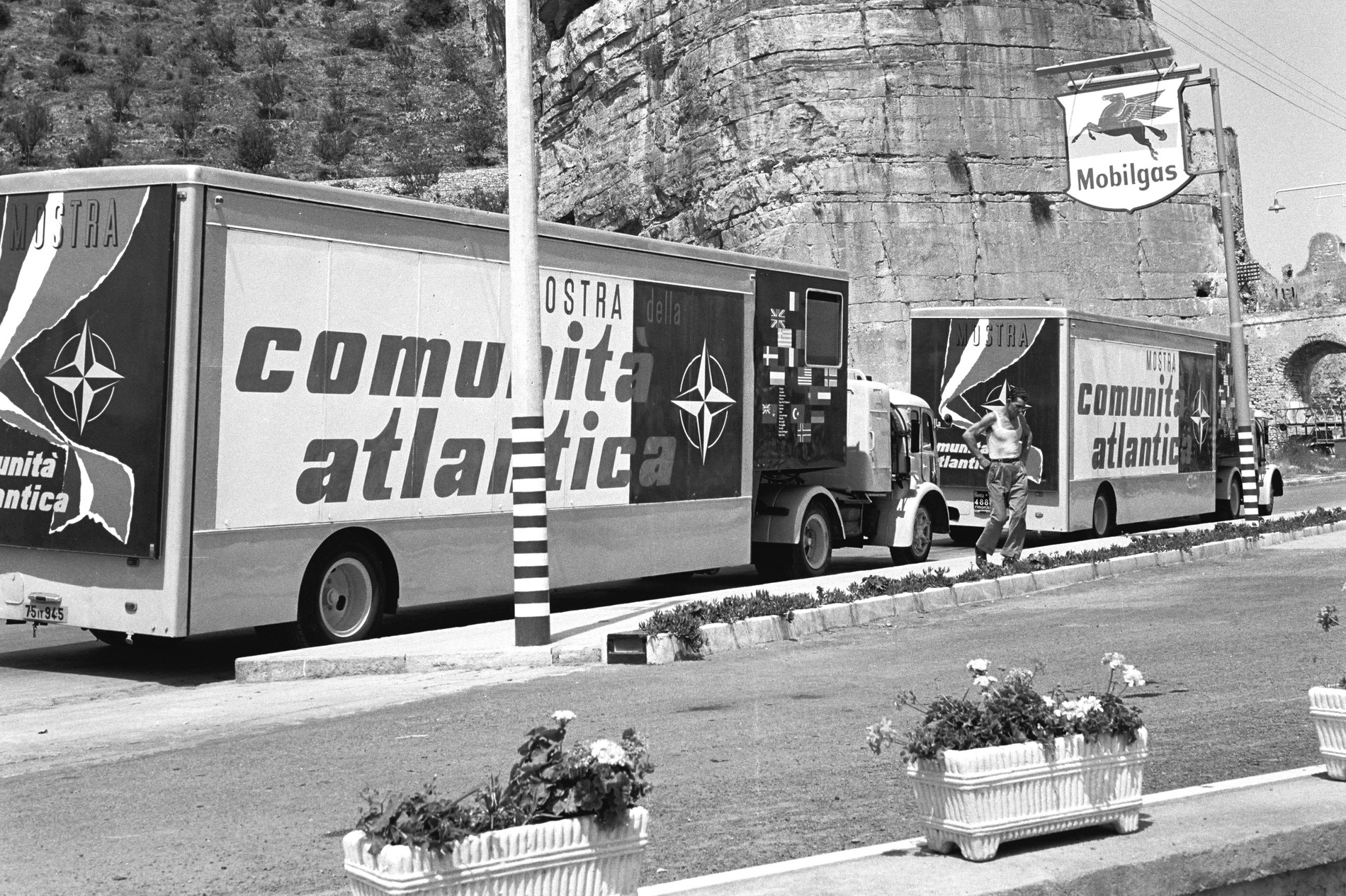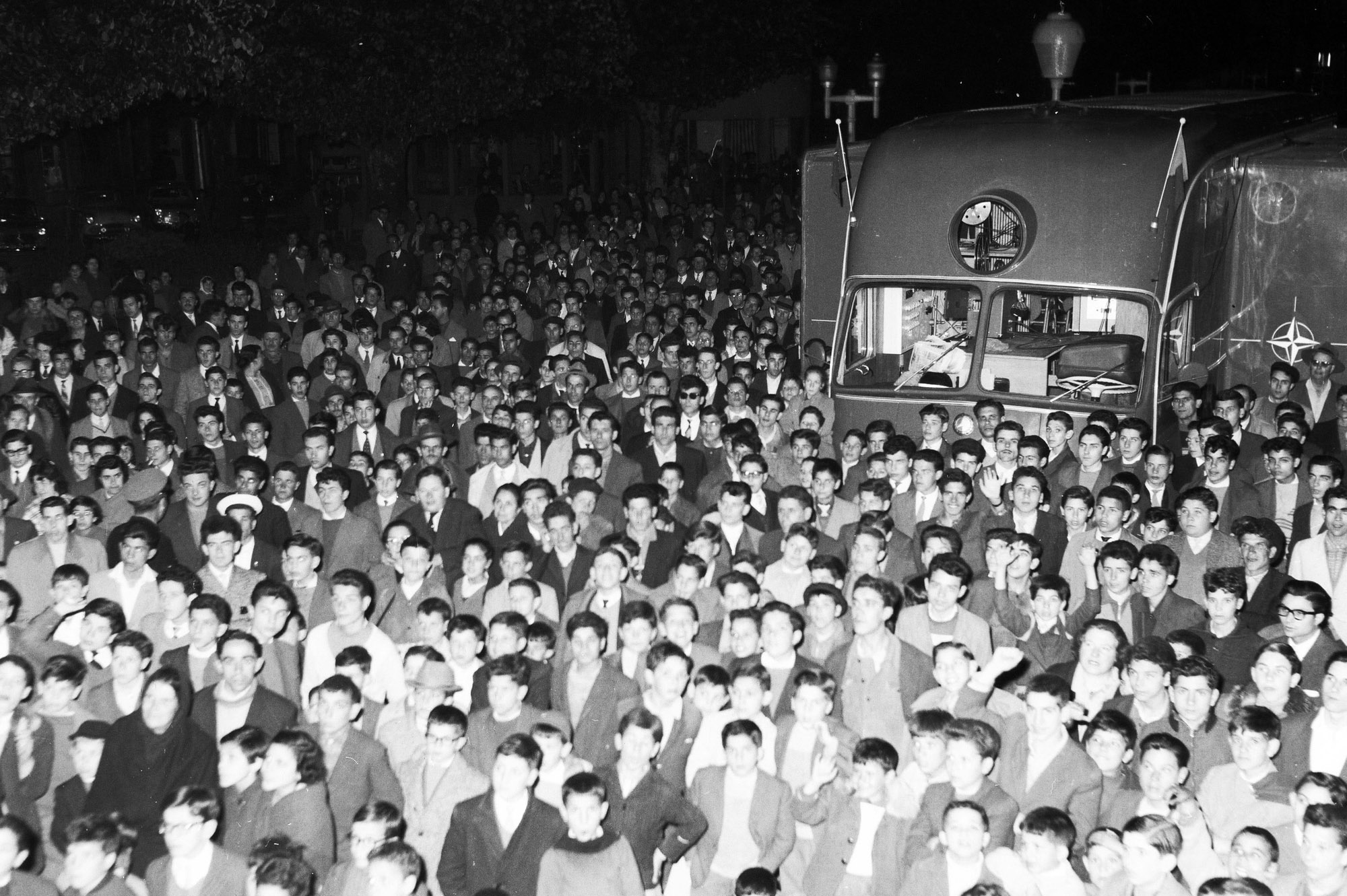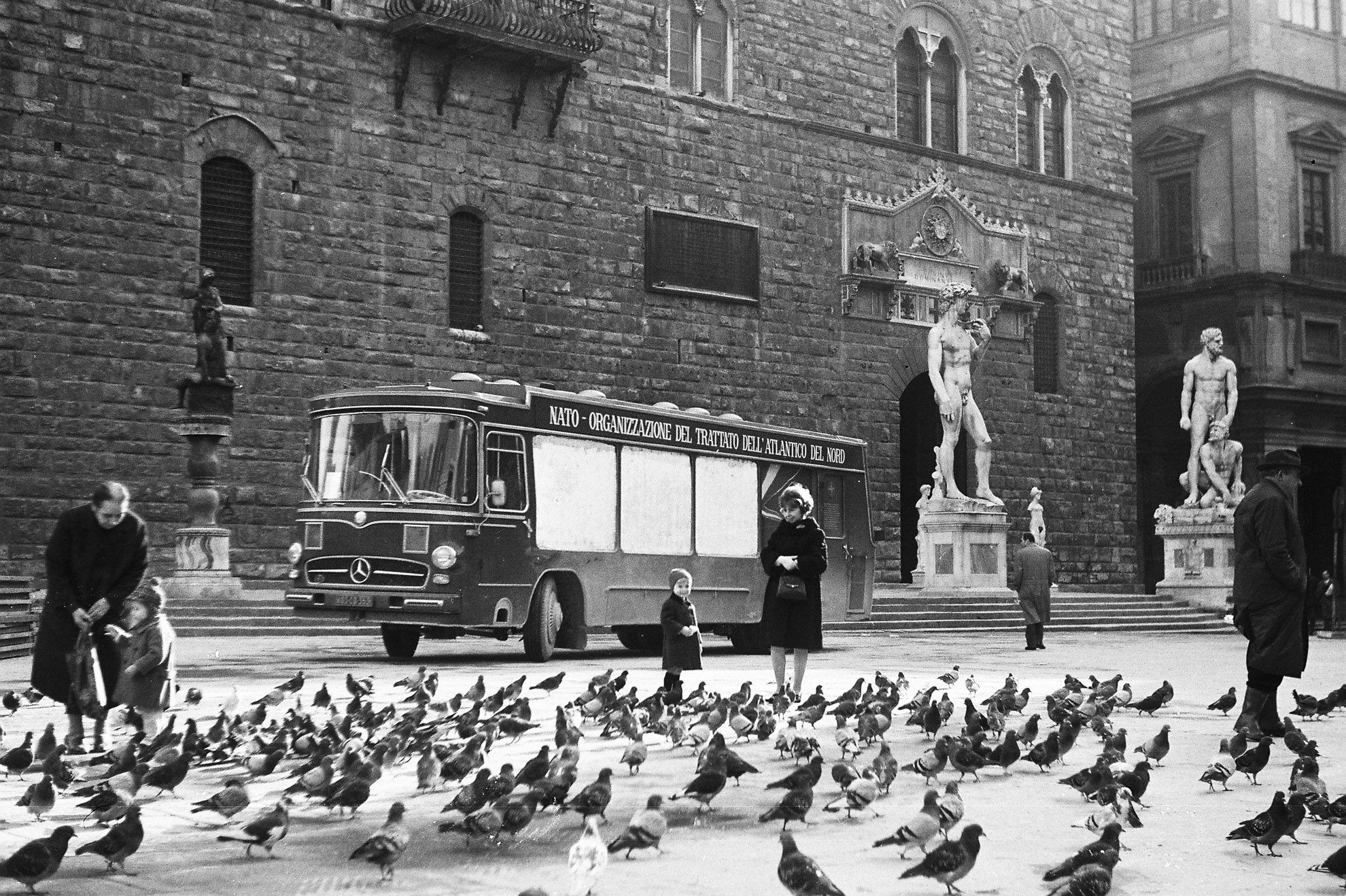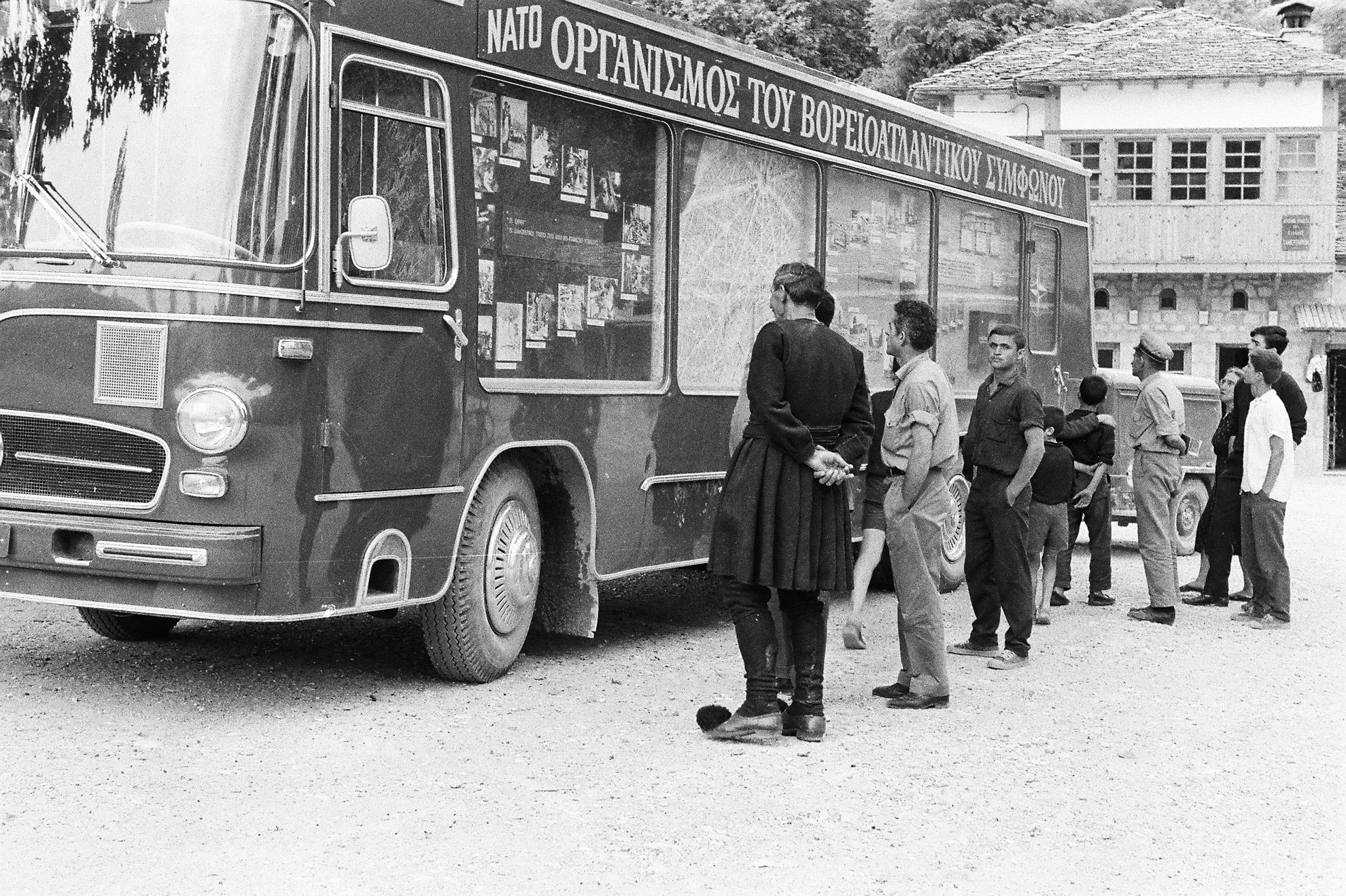NATO’s travelling exhibitions
The idea of informing the people of Allied member countries about NATO’s origins and why it came into being dates back to 1951. At the time, the only channels of information were newspapers and the radio. People who lived far from major cities only rarely had access to them. Hence the idea of going out to meet those people.
With this aim in mind, in 1952 the first travelling exhibition, called “Caravan of Peace” and made up of a large tent and an expandable trailer, set off from NATO Headquarters in Paris to make its way down to Italy. It was an immediate success, and from February to August 1952, 1,542,815 visitors flocked to the exhibition in Naples, Rome, Bologna, Milan, Bari, Genoa, Turin, Florence and Venice.




